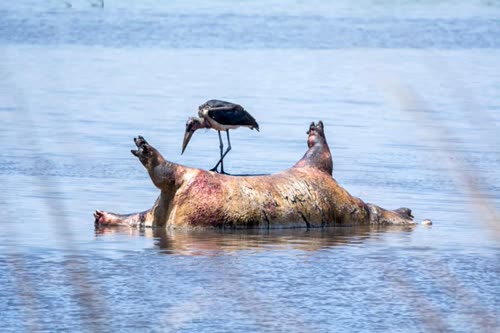"Requisitioned from farmers, blitzed with anthrax-laden bombs in the 1940s, and made inhospitable to human and animal life for decades, the tiny Scottish island of Gruinard now serves as home to a flock of healthy sheep and a disreputable monument to the birth of biological warfare. The research conducted at Gruinard during the second World War was the very first of its kind, providing proof of concept of a natural microorganism that could be massively weaponized to inflict environmental damage and human fatalities.
At the conclusion of the trials, an estimated 4 x 10^14 spores had been detonated at the island, and Gruinard was so thoroughly drenched in anthrax that it remained forbidden to the public for nearly half a century.(8) Annually from 1948 to 1968, the government dispatched scientists to the island to sample the soil, persistently finding that it was heavily contaminated and would likely remain that way until at least 2050.(9) For decades, warning signs posted along the coast cautioned both man and beast against venturing to an island that remained “under experiment.”(1)
Two bioterrorism stunts seem to have prompted the British Ministry of Defence to reconsider the status quo of Gruinard island. In 1981, a package was discovered on the property of the Chemical Defense Establishment at Porton Down filled with soil reportedly sourced from the island.(10) A group calling themselves “Dark Harvest” released a press statement declaring that two microbiologists had retrieved 300 pounds of Gruinard soil, a portion of which had been packaged and delivered to Portion Down in an attempt to return “the seeds of death” in protest of the experiments and the island’s uninhabitable state. Testing of the packaged soil found that it did indeed contain anthrax and that the soil appeared similar to samples from Gruinard. Four days later, a second package of apparent Gruinard soil was discovered at a meeting of the ruling Conservative Party, though the sample did not contain any anthrax.
A subsequent investigation by the government into the extent of anthrax contamination at Gruinard found that the spores were circumscribed to a hot spot of about 7.4 acres in the southern part of the island.(9) In 1986, the government proceeded with decontaminating the spit of land. Foliage was hosed with a weed killer solution and then burnt. A toxic solution of 280 tons of formaldehyde diluted in 2000 tons of seawater was concocted and then drenched over the island’s soil using 30 miles of drip hoses.(7) The topsoil was then extracted and sealed away in containers, dispatched to a still-unknown location. A year later, the soil was seeded with grass and a flock of 40 sheep were dispatched to graze the entire island for five months without any incident or ovine infection.(5) In a show of good faith, a junior Defense Minister, Michael Neubert, ventured to Gruinard on April 24th, 1990 to remove its warning signs and publicly declare the island safe.(7) (The government may have been hedging their bets by delegating a junior staff member as the face of this chancy mission.)
